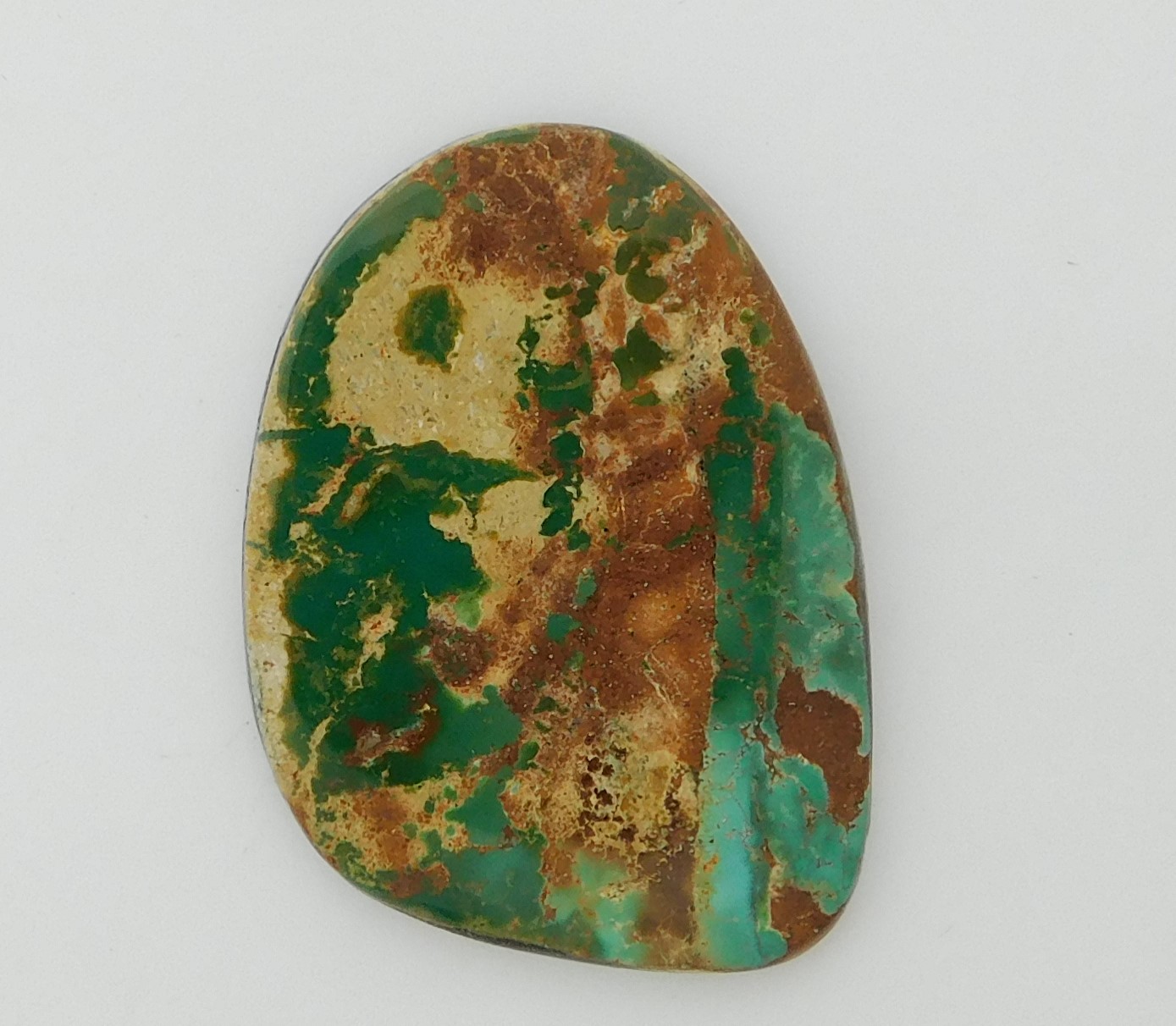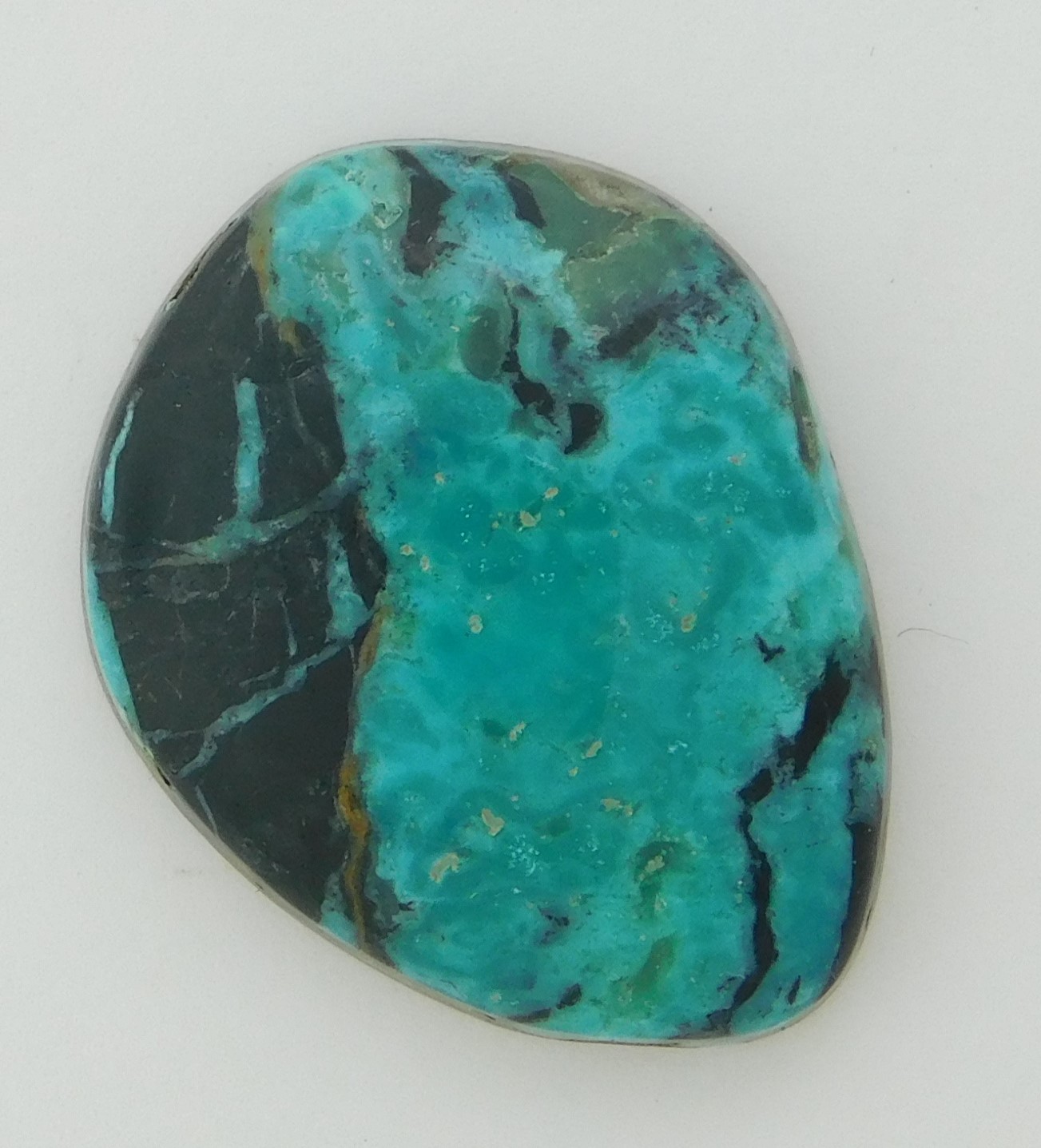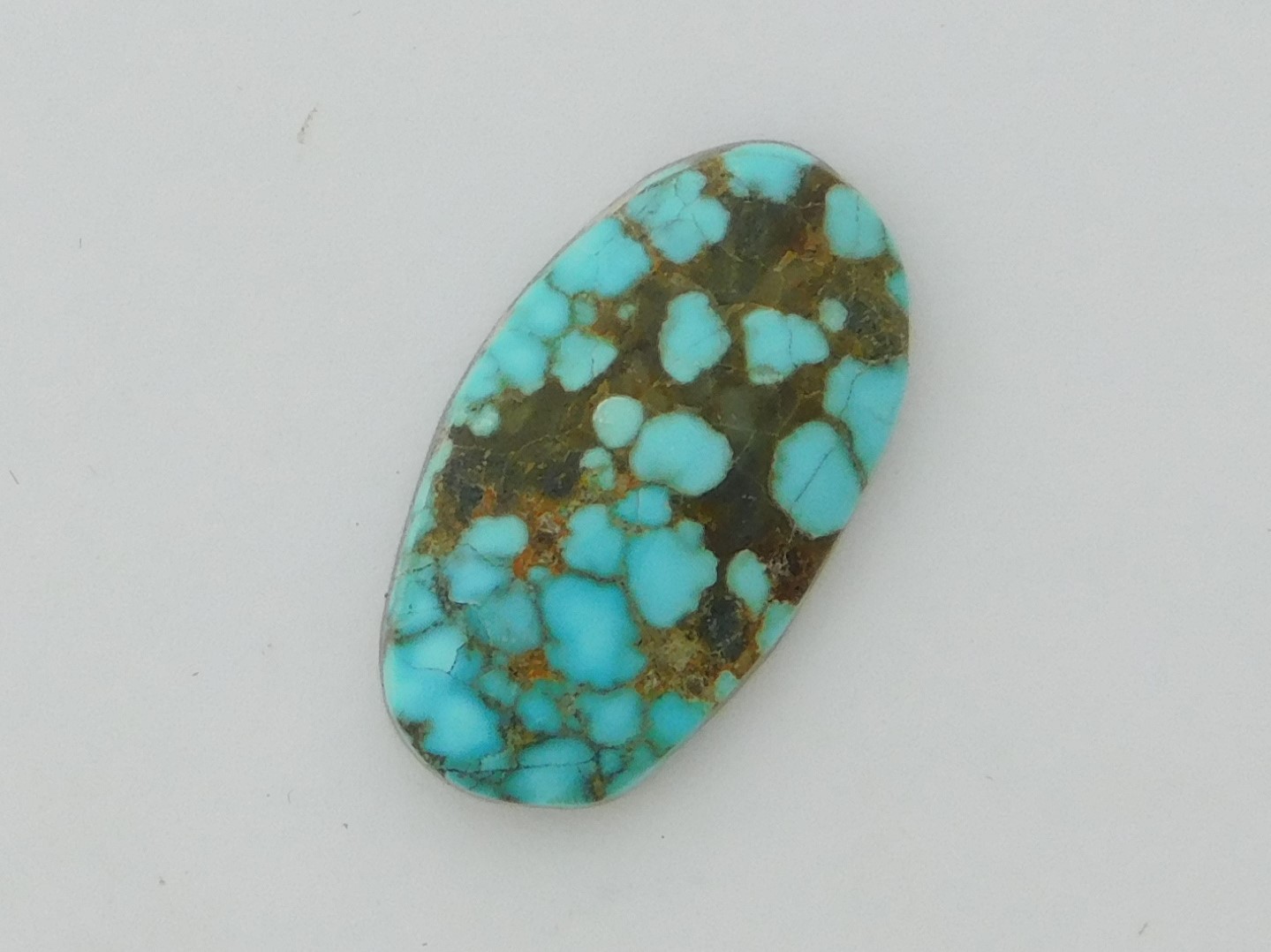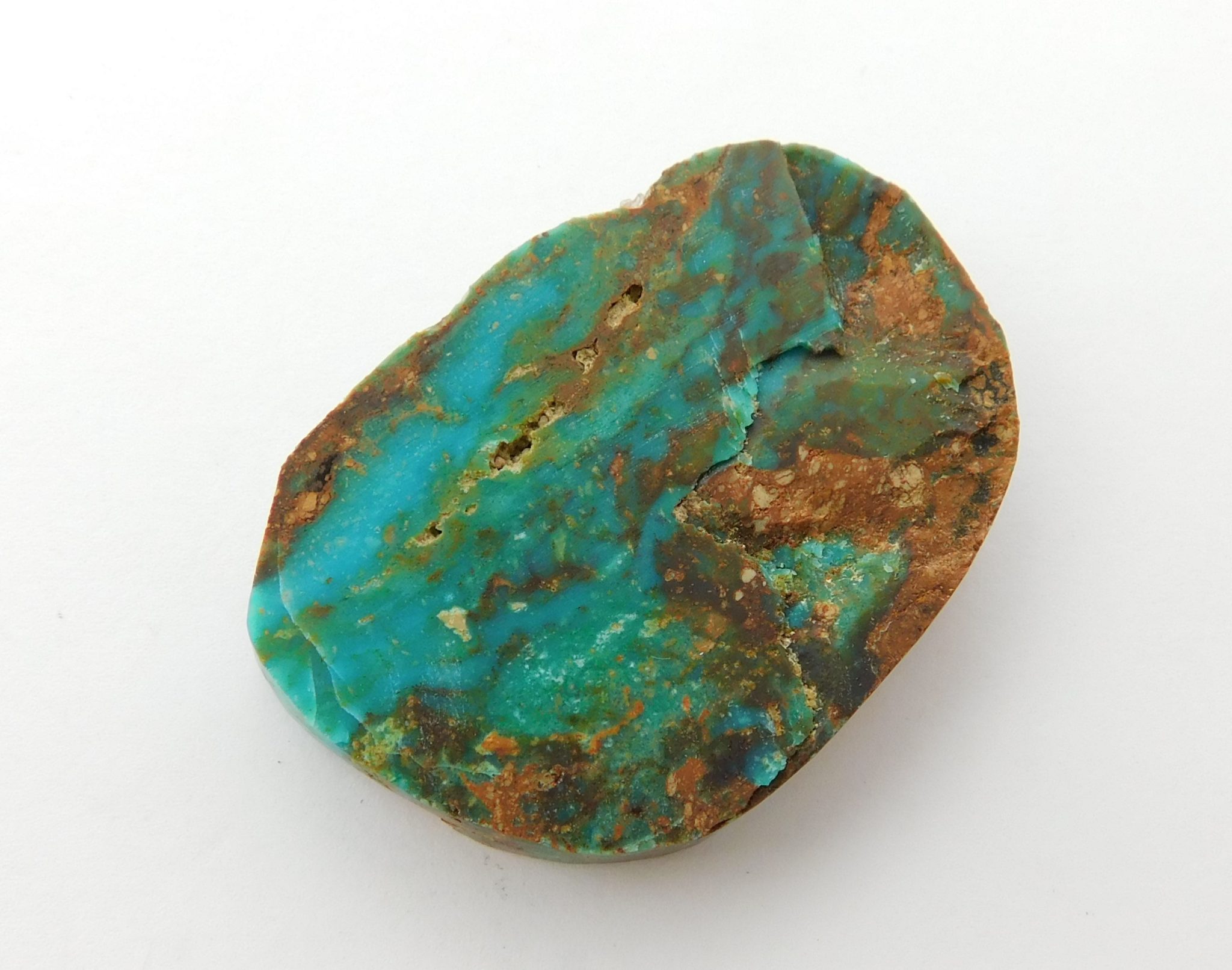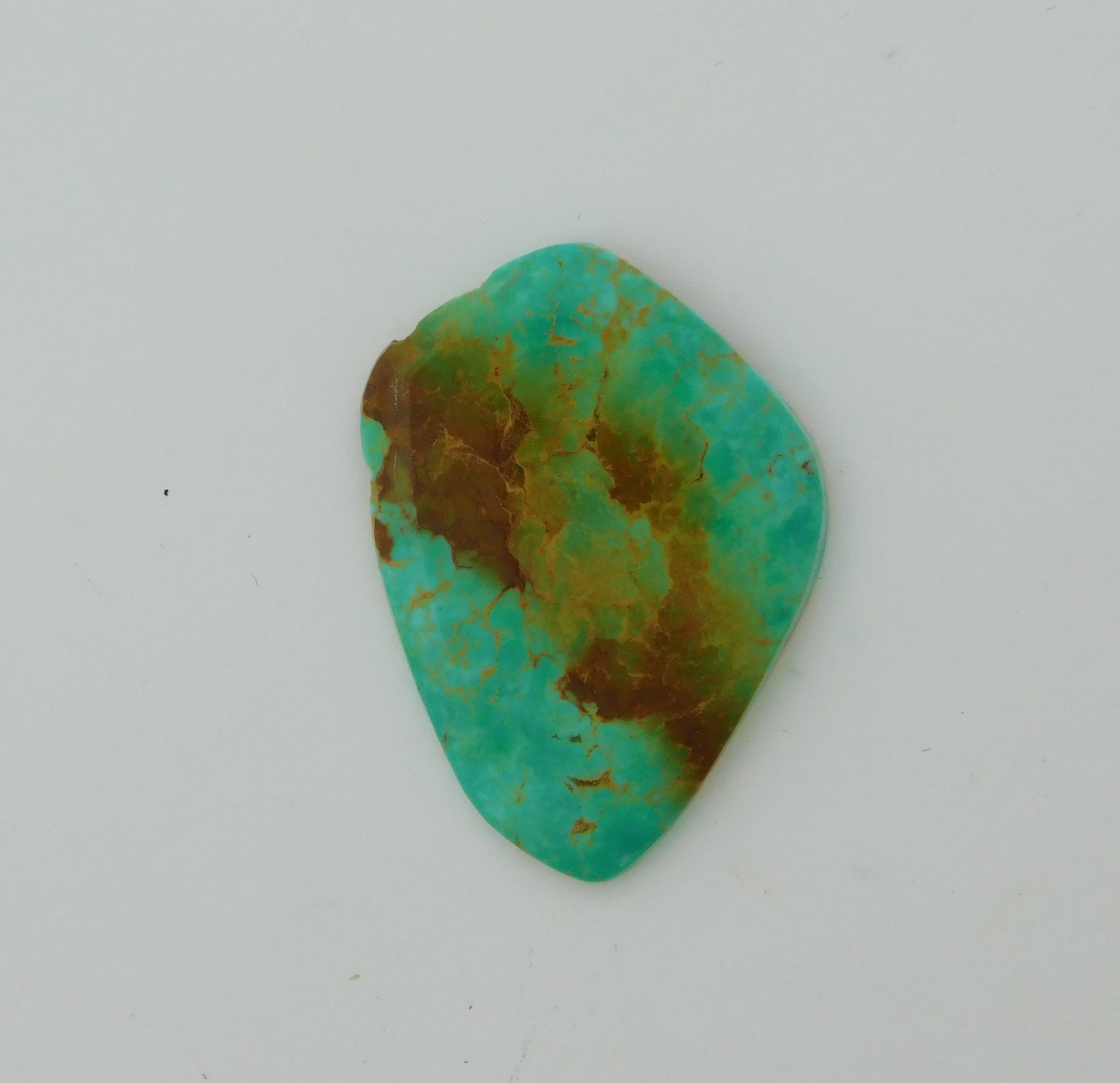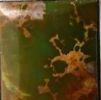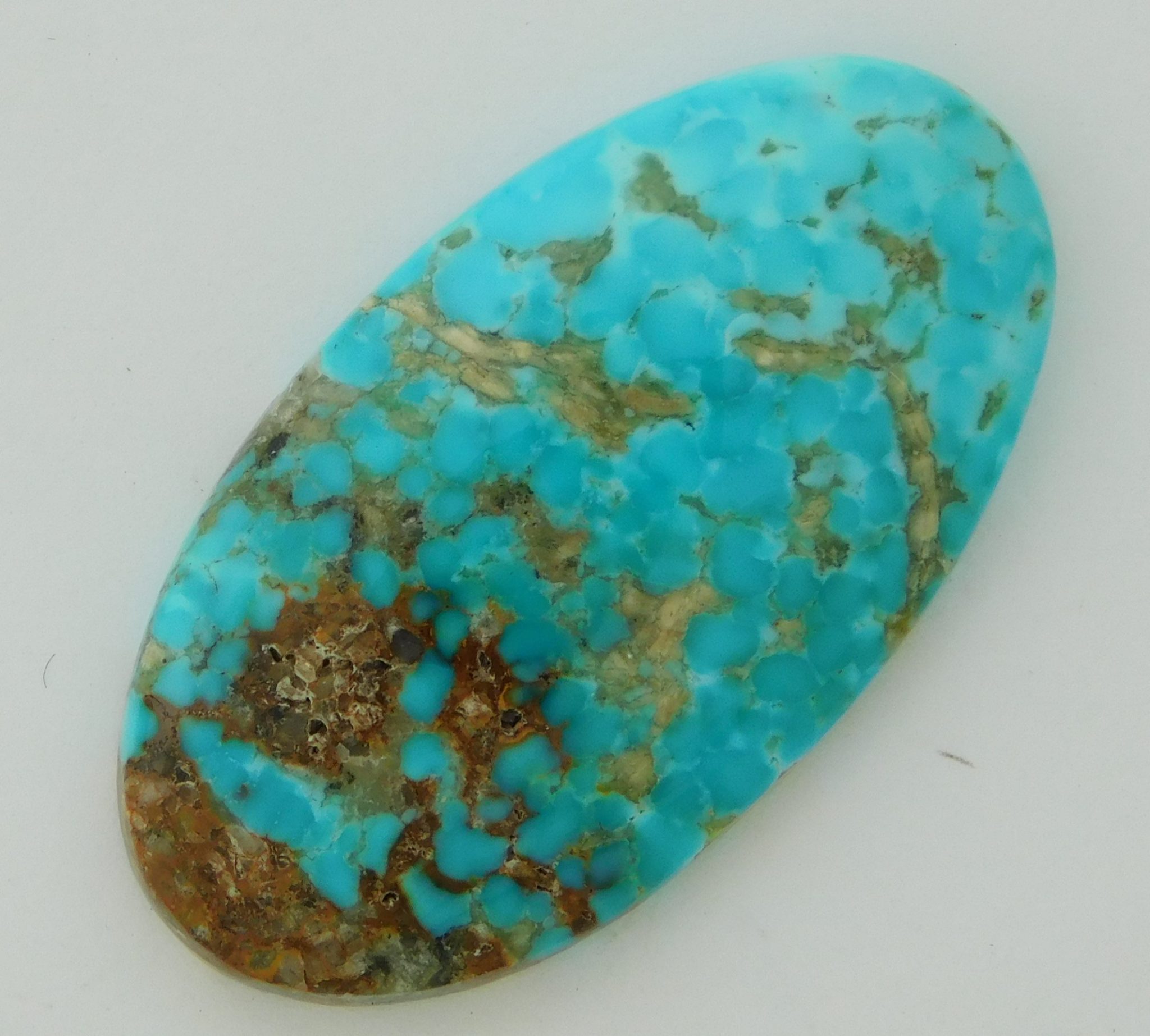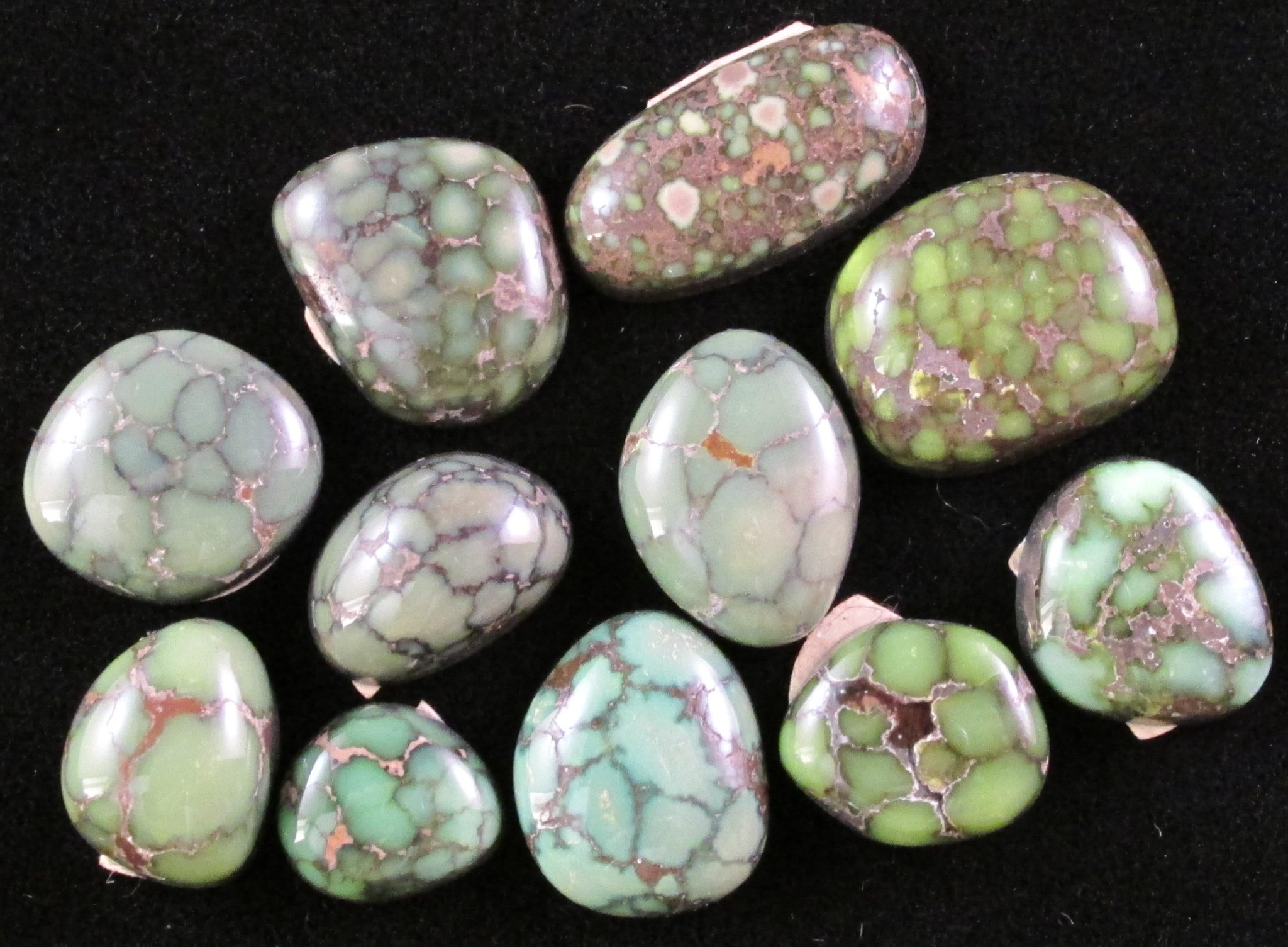
Most notably, Turquoise varies in quality from Gem quality to low grade “chalk”.
Most importantly, according to some experts, 90% of the turquoise that you will come across is stabilized Alternately, most turquoise coming out of the ground is chalky.
-
First of all, Gem quality turquoise is hard
-
Secondly, Low grade turquoise is soft.
-
In fact, Turquoise is a hydrated phosphate of copper and aluminum and is the result of percolation of meteoric or groundwater through aluminous rock in the presence of copper. For this reason, it is often associated with copper deposits as a secondary mineral. Consequently, Turquoise is most often found in arid, semiarid or desert places.
Most noteworthy, Turquoise attains it’s color from the heavy metals in the ground where it forms.
-
In general, Blue turquoise forms when there is copper present, which is the case with most Arizona turquoise.
-
Alternately, Green turquoise forms when there is iron present, which is the case with most Nevada turquoise. Consequently, Matrix is the host rock surrounding the turquoise.
Most importantly, Tucson Turquoise offers many varieties of turquoise jewelry, with an emphasis on American Southwest turquoise. In conclusion, the following is a list of turquoise varieties from the American Southwest, mainly Nevada and Arizona mines. Please note that even the “experts” are uncertain of the origin of some specimens. Most notably, Turquoise color, matrix, and density can vary greatly from a single turquoise mine site!
First of all, Royston is actually a district in Nevada consisting of three mines: Bunker Hill, Oscar Wehrend and the largest producer, Royal Blue. Generally speaking, Royston turquoise comes in beautiful colors ranging from deep forest green to rich, light blues set off by a heavy, brown matrix. Most notably, the Royston district is still producing some turquoise of high quality, but in limited supply.
-
-
Stormy Mountain turquoise mine is in Elko County, northeastern Nevada. Along with Blue Diamond mine, Stormy Mountain produces hard, dark blue turquoise. Likewise, this includes a blotchy, black chart matrix which resembles storm clouds. Notably, this mine is presently not active, so it has particular appeal.
-
-
-
Indian Mountain is the best known of the contemporary mines. Consequently, the Indian Mountain turquoise mine is in Lander County, Nevada. It is known for it’s brown matrix with blue circles of turquoise.
-
-
Pilot Mountain is in Esmeralda County, Nevada. In addition, Pilot Mountain turquoise ranges in color from blue to green with a dark brown, black or reddish matrix. Finally, this stone can have deep blue-green colors.
-

Pilot Mountain Turquoise Nevada -
-
-
-
Turquoise Mountain and “Bird’s eye” turquoise come from the same mine in Northwestern Arizona near the Kingman mine, Mineral Park Mining District. Consequently, this mine closes in the 1980’s. Generally speaking, Turquoise Mountain turquoise is light to high blue with both web and non-web matrix. Most importantly, “Bird’s eye” describes stones from this mine which show areas of light blue circles with dark blue matrix resembling the eye of a bird.
-
-
Tyrone Turquoise is with the copper mine operations southwest of Silver City, New Mexico. Incidentally, the name “Tyrone” refers to a group of claims around Silver City and the Tyrone copper mine. It often comes with a brown rind.
-
-
-
-
Cerrillos turquoise mine is between Santa Fe and Albuquerque, New Mexico. Most noteably, it is one of the most famous prehistoric mining districts in the American Southwest. Most importantly, Cerrillos is the only turquoise which forms at the base of a volcano. Therefore, there is a variety of colors which develop from the minerals in the various volcanic host rocks. Ironically, there are Seventy-five colors, from tan to khaki-green to rich, blue-green to bright, light colors. Unbelievably, there are more than two hundred dig sites. Consequently, the largest and most famous sites are the Blue Bell, Castilian and Tiffany mines.
-
-
Red Mountain is in Lander County, Nevada. In summary, this mine offers a large quantity of high grade turquoise. Consequently, the best Red Mountain turquoise rivals some of the high quality turquoise from the best mines in the Southwest. Most notably, Red Mountain turquoise has an intricate often red spider web matrix.
-
King’s Manassa turquoise is a mine in Manassa, Conejos County, Colorado. Most notably, Manassa turquoise is best known for its rich, brilliant greens and golden matrix. Alternately Blue and blue-green turquoise is in these deposits as well. Most noteworthy, Mr. King was an owner of the mine, hence the name “King’s Manassa”
-
Kingman mine is in Mohave County in Western Arizona. The copper mining in the Mineral Park Mining District around Kingman produces a large supply of the world’s turquoise. It has been identified in over 30 different colors, therefore aficionados learn the patterns and matrix.
-
-
Cripple Creek turquoise mine is in Teller County, Colorado. Consequently, it is found when miners looking for gold in the area also find turquoise deposits. Most notably, there are two separate mines are currently active in the area both under the Cripple Creek name.
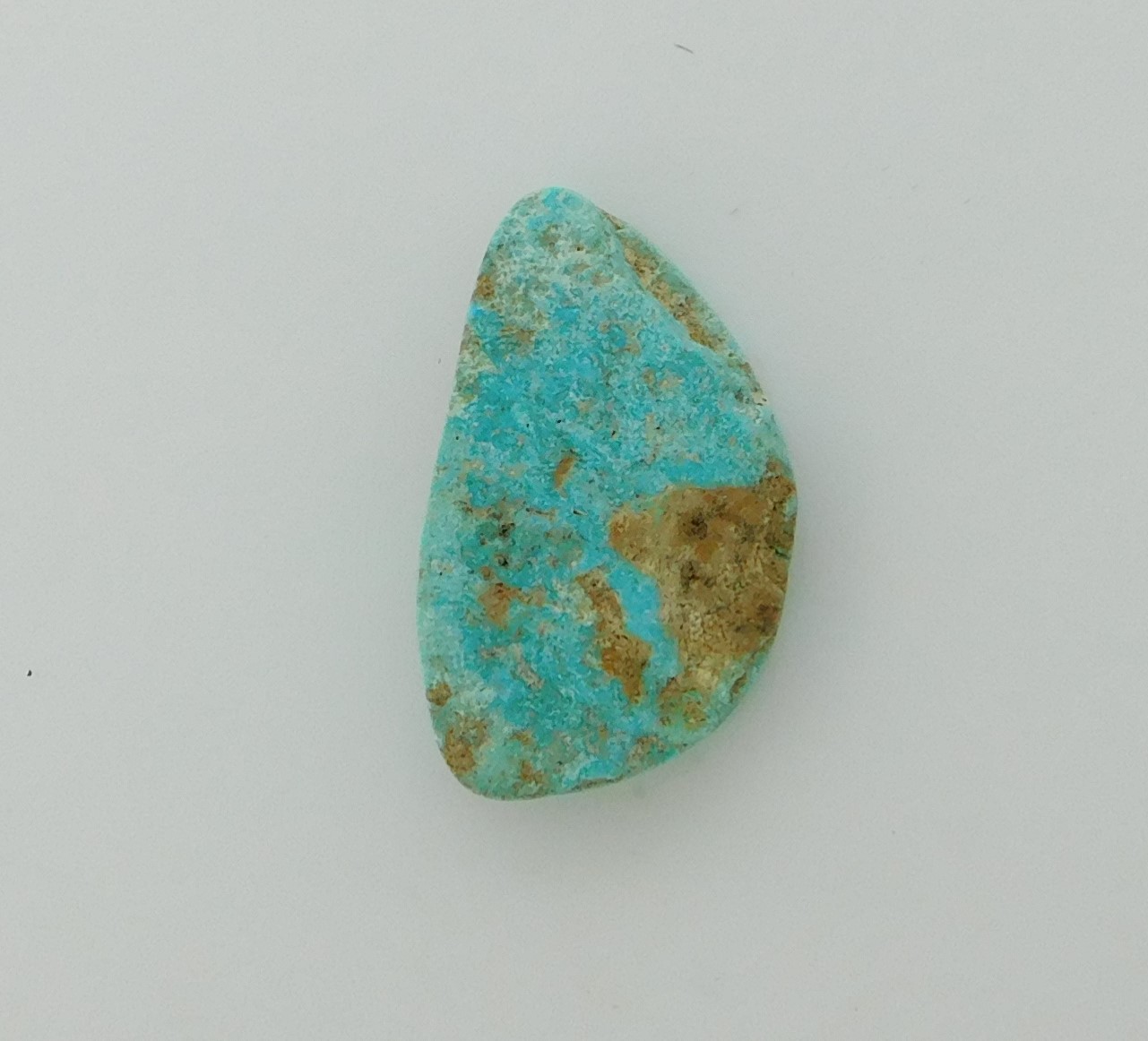
-
Blue Gem turquoise is approximately 6 miles south of Battle Mountain, Nevada, within a large copper-mining operation. In summery, Blue Gem mine produces almost every shade of green and blue from intense blues to deep green combinations with a hard, irregularly distributed matrix. Consequently, of the multiple Nevada mines that are under the name “Blue Gem”, the Battle Mountain Blue Gem mine, which begins production in 1934, yields the most valuable Blue Gem turquoise. As a result, this is due to its rich color and hardness. In short, this mine is now closed and is highly sought after by collectors.

-
Fox is one of Nevada’s most productive turquoise mines. Consequently, the area produces a huge amount of good quality blue-green stone with a distinctive matrix.
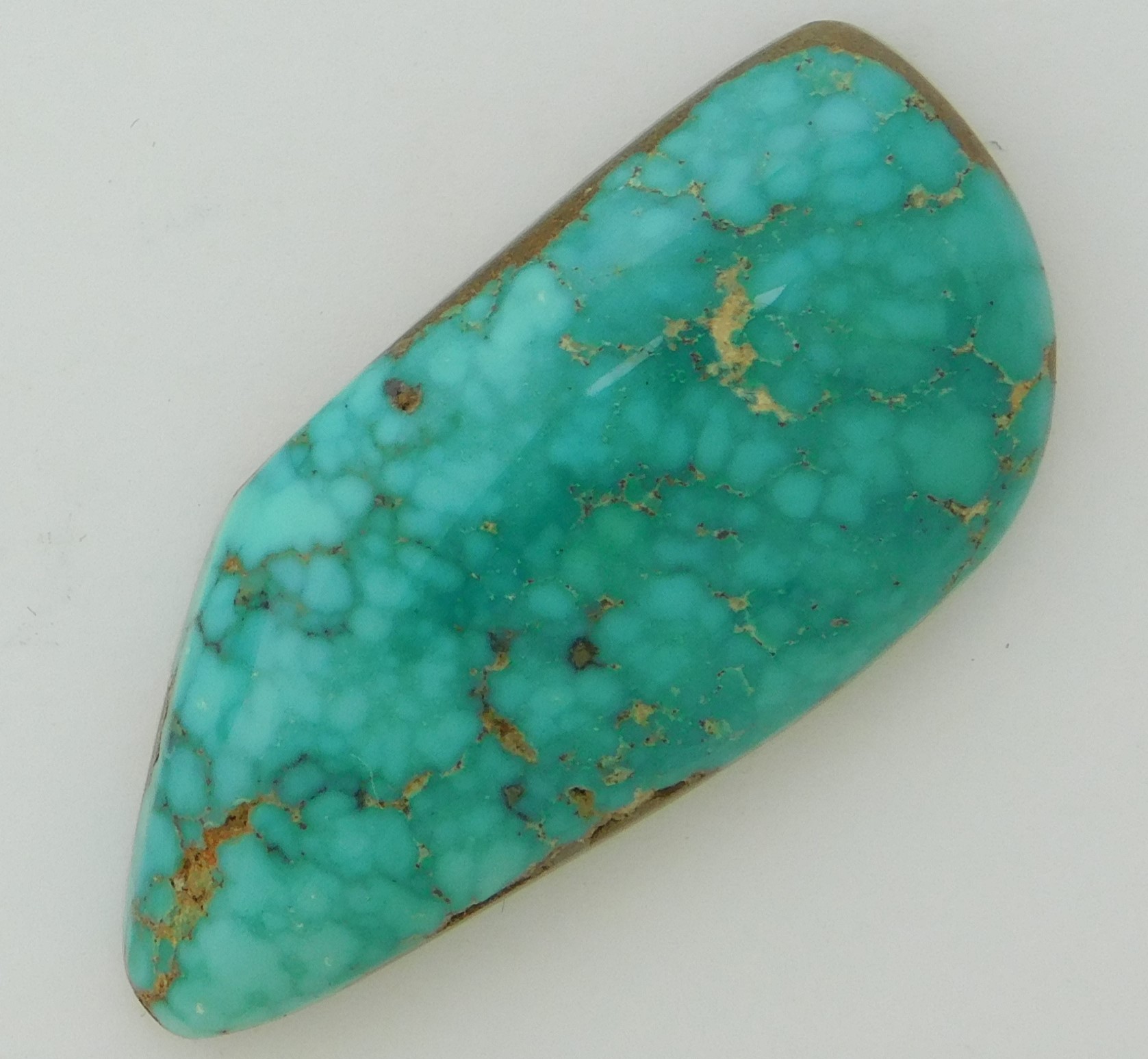
-
Number 8 mine is in Calin, Nevada. Consequenlty, it is at one time a gold and copper mining operation on the west side of the Tuscarora Mountain Range. Most notably, in it’s prime, enormous nodules are found, including one that weighs 150 pounds. Number 8 turquoise is famous for its black, golden-red and brown spider web matrix set off with the unique bright powder blue turquoise background. Consequently, this mine is no longer operating, and Number 8 turquoise can be extremely valuable. The black matrix is the most sought after variety.
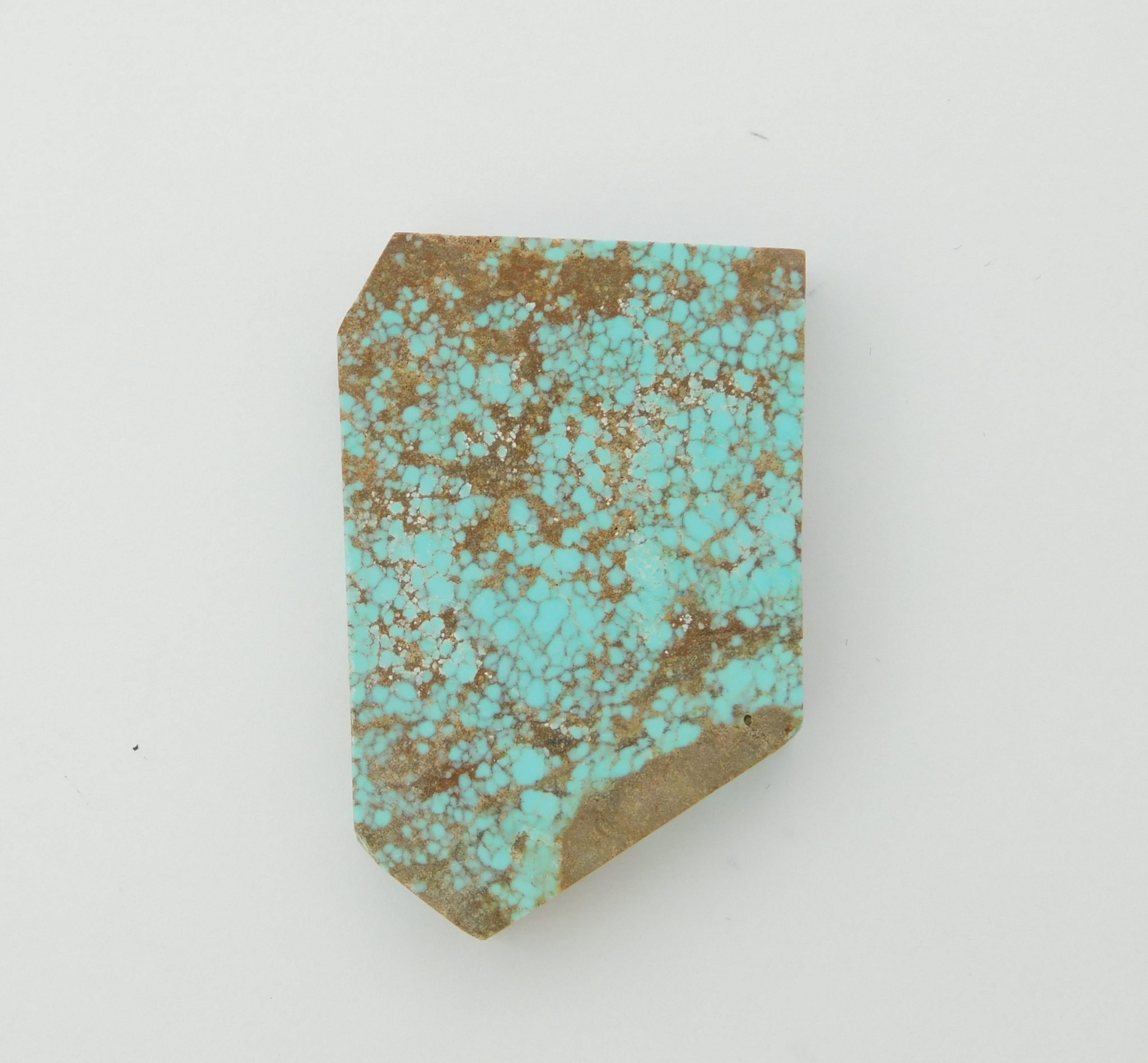
-
Sleeping Beauty mine, near Globe, Arizona, produces a solid, light blue color with no matrix. Most importantly, it is a favorite of Zuni silversmiths. Consequently, Sleeping Beauty is often in needlepoint, petite point and inlay jewelry due to its consistency in color and is ease to cut. Most interestingly, occasionally black dye is added to sleeping beauty to add definition, demonstrated in the example. In conclusion, the Sleeping Beauty Turquoise mine is no longer in operation.
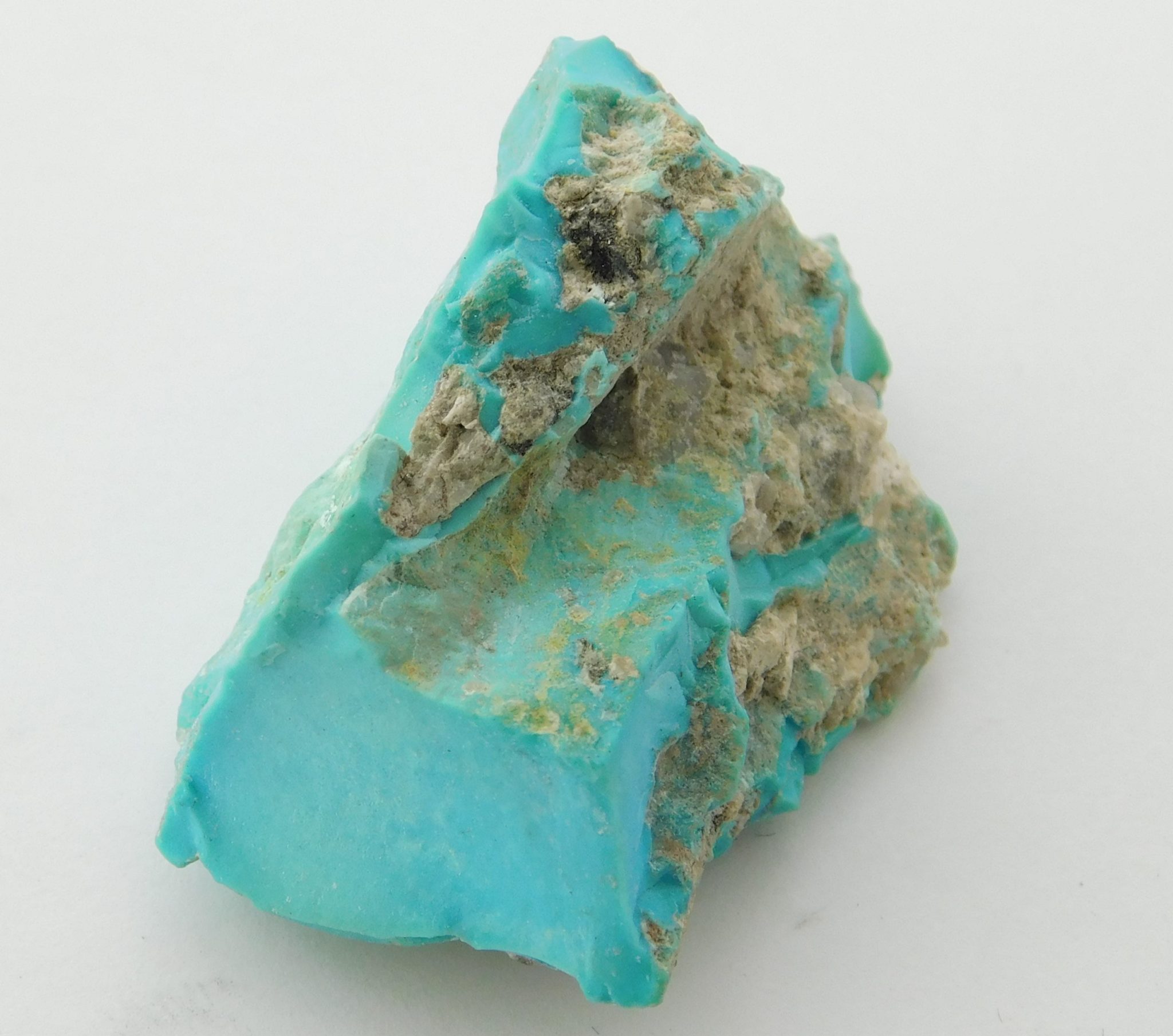
-
-
-
Lone Mountain aka Blue Jay Mine turquoise mine, is in Esmeralda County, Nevada. In addition, it once produces a great variety of turquoise. Usually, it is found in nodules and is noted for some of the finest examples of spider web turquoise as well as clear, deep-blue stones. Most notably, among “classic” American turquoise, only Lander Blue is more valuable.
-

-
Morenci turquoise is in southeastern Arizona, Greenlee County. Most notably, it is high to light blue in color with an unusual matrix of irregular iron pyrite or “fool’s gold.” Most noteworthy, when polished, pyrite often looks like silver. In conclusion, the name comes from the large open pit Morenci copper mine where a great deal of turquoise from. Finally, this mine is no longer producing turquoise, which makes it collectible.
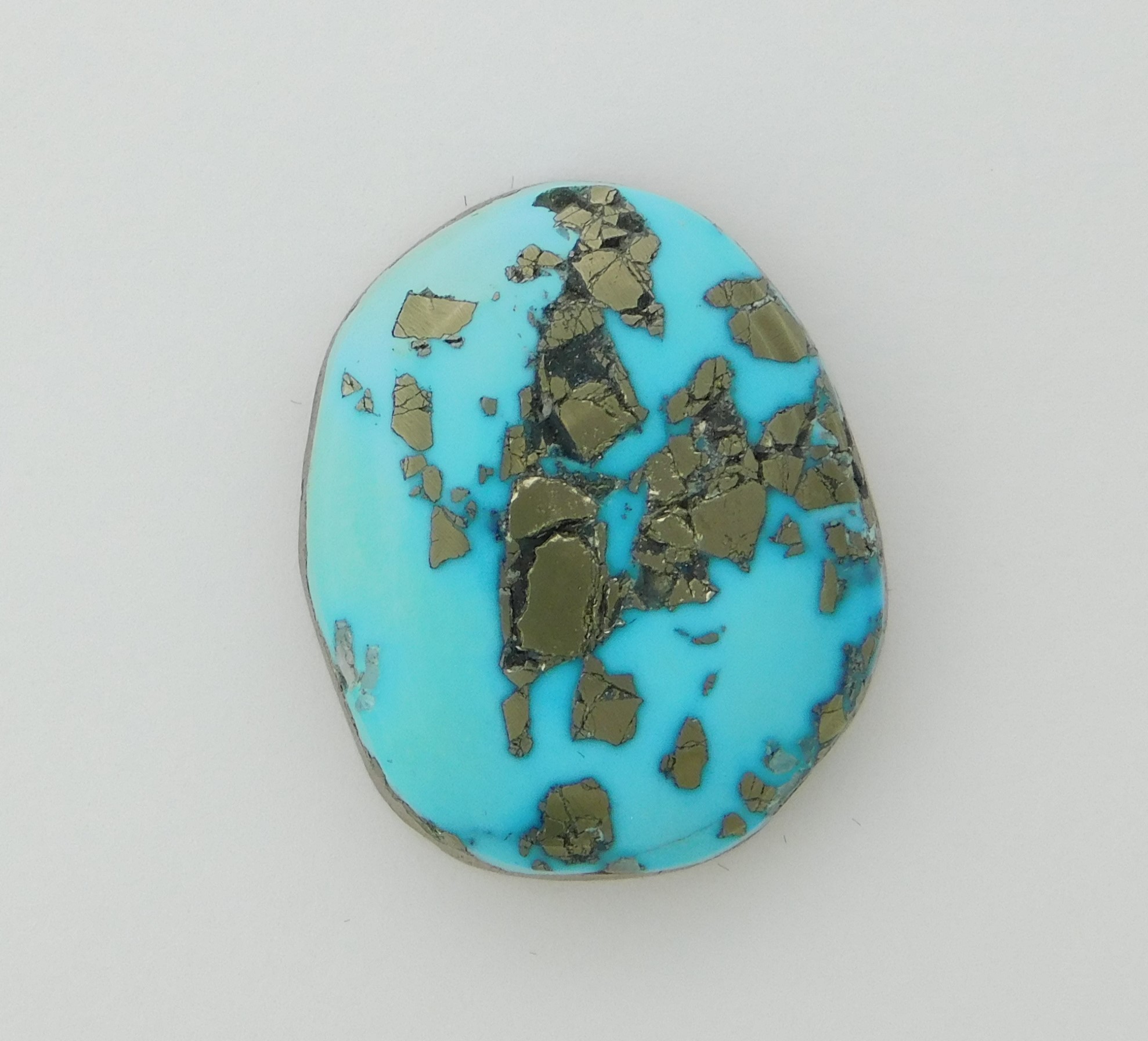
-
-
-
Lander Blue turquoise is from a mine in Lander County, Nevada. Additionally, the first claim is in 1973. Consequently, it produces some of the most beautiful spider-webbed turquoise miners ever find. Most notably, it is the rarest and the most valuable turquoise in the world. In summary, Miners find less than 110 pounds of this beautiful spider-web turquoise.

-
Bisbee turquoise is from the Lavender Pit copper mine that is no longer in operation. Bisbee turquoise is famous for its deep blue color and smoky black matrix. All things considered, it is identifiable by the reddish brown host rock.
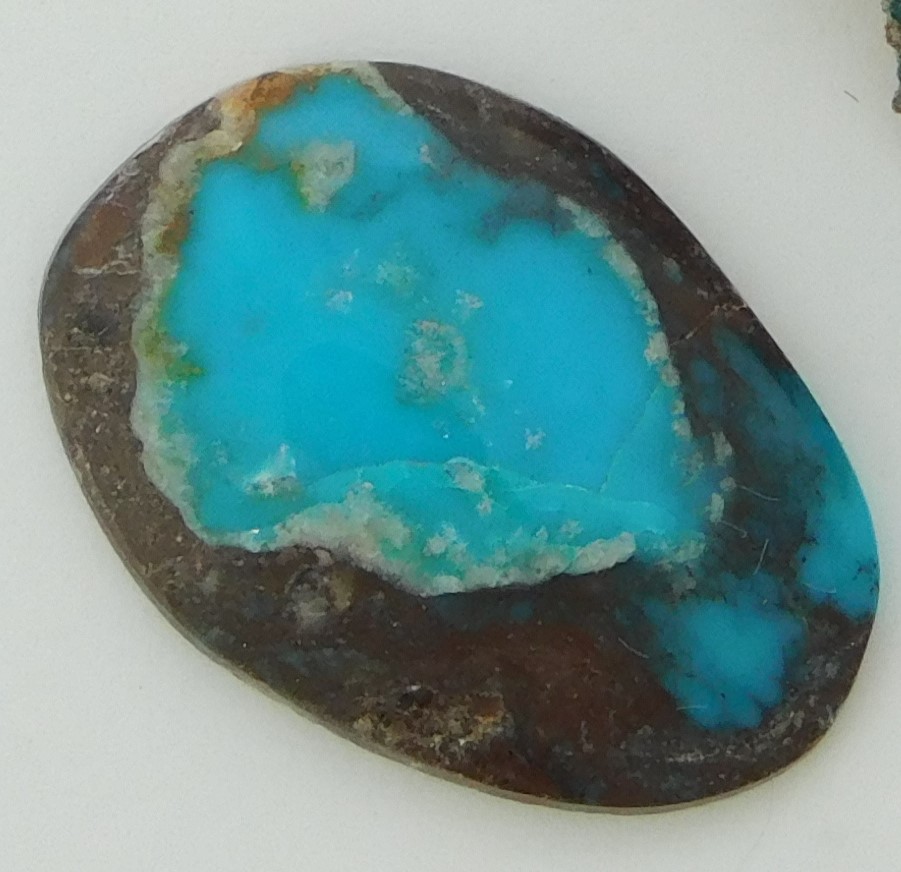
-
-
-
Stone Mountain is a small mine in Northern Nevada. Most notably, this mine produces a fine hard gem grade turquoise with colors ranging from a variety of greens to a medium blue. Most noteworthy, it can be slightly translucent with markings of limonite.

-
Carico Lake turquoise is from a dried up lake bed in a high, cool area of Lander County, Nevada. It’s clear, iridescent, spring-green color is due to its zinc content. Consequently, it is highly unique and collectible. Alternately, Carico Lake turquoise can be a dark blue-green color with a black, spider web matrix. Likewise, the Carico Lake mine is primarily a gold producing mine. Generally speaking, from time to time, the mining company leases the turquoise producing part of the mine to individual miners who work that part. Finally, mines in this district also produce faustite, an apple-green mineral similar to turquoise but experts declare it as a separate mineral in 1953.
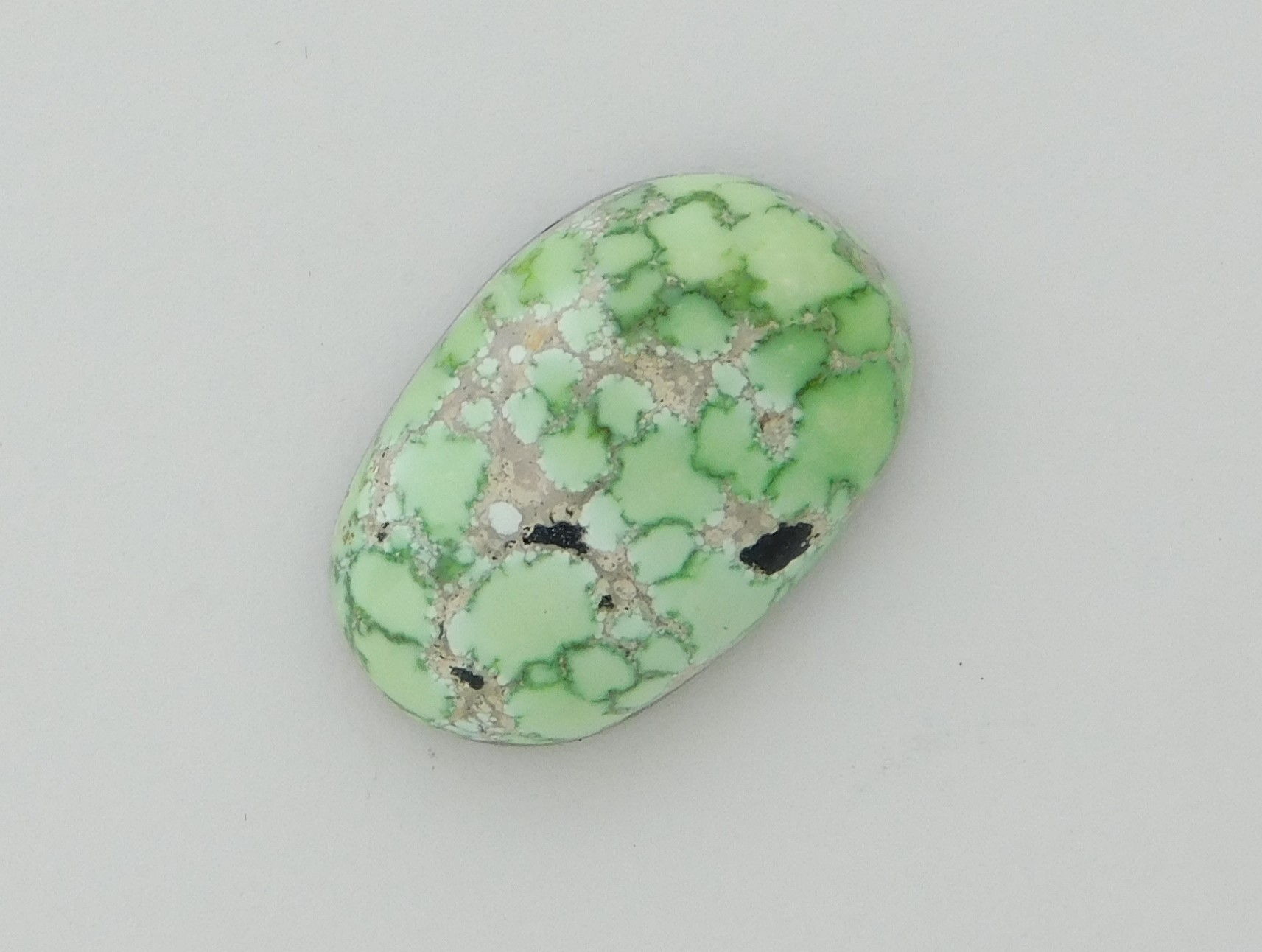
-
Candelaria turquoise mine is a small Nevada mine that produces very little stone. The turquoise is of good quality and is a high blue color with an intermittent black or brown, non-webbed matrix.

-
Damele aka Damali mine is in east-central Nevada near the Carico Lake mine. Damele turquoise is quite distinctive because the zinc content turns the stone yellow-green and increases its hardness. The matrix of Damele has webbing with a dark brown to black matrix.
-
-
Darling Darlene: In the early 1970’s Joe Barredo mines some very fine gem turquoise. It ranges in color from shades of green and light to dark blues. The name of the mine comes from Darlene, one of Barredo’s daughters who had passes away as a young woman.
-
Dry Creek turquoise mine is on the Shoshone Indian Reservation near Battle Mountain, Nevada. The lack of any specific color consistency makes this stone distinctive and unique from other turquoises. Because this turquoise is as rare as the sacred buffalo, the Indians call it “Sacred Buffalo” Turquoise.
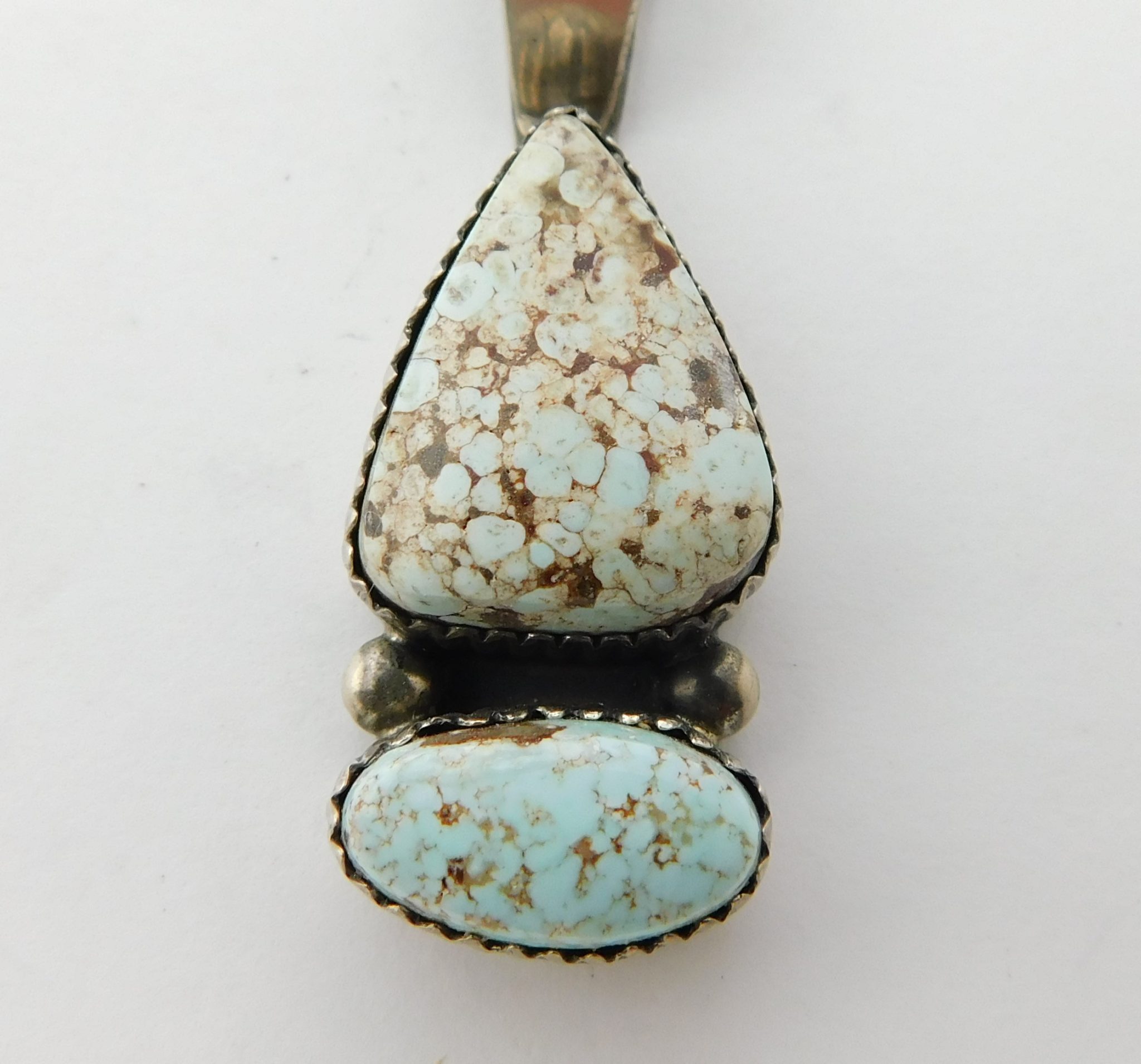
-
Easter Blue mine is in northwest of Tonopah, Nevada a few miles from the Royston district. Turquoise from this claim is known as Blue Mountain and Blue Gem. In 1907, the first material is a fine blue color, usually occurring in thin veins, later the mine produces a blue green turquoise with a light to dark brown matrix.

-
Godber-Burnham mine is East of Austin, Nevada and is discovered in 1932. First claim under the name “Last Chance”, it is later sells to Frank Burnham and then in 1934 to Walter Godber. The turquoise ranges from medium to dark blue usually with a beautiful spider webbing. It can also have a very dark or black mottling forming blotches and veins running through the stone.
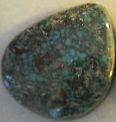
-
Blue Moon turquoise mine is active until the late 1970’s in Esmeralda County, Nevada. Typically, light-sky blue with a dark brown to black matrix. It is currently operating.

-
Orvil Jack discovers and develops the mine in northern Nevada that bears his name. Blue Ridge in Crescent Valley is the area where the mine is. The rare yellow-green color of the turquoise comes from the zinc content. Only a small amount is coming from the mine.

-
Ajax mine is in south-central Nevada in the Royston area. A relatively new mine that yields stones from light blue with darker blue veins to a predominate dark green with light blue veins. The dark green with light blue veins is quite unusual for turquoise.

